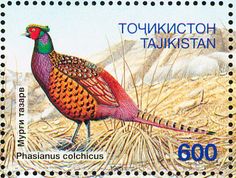Based on count data compiled from Breeding Bird Survey (BBS) from 1974 to 2012, Christmas Bird Count (CBC) collected from 1914 to 2013, and hunter data from Annual Game Take Survey (AGTS) for years 1948–2010, ring-necked pheasants (Phasianus colchicus) in California have experienced substantial declines in agricultural environments. An additional analysis using a restricted data set (1990–2013) indicated recent negative impacts on pheasant numbers associated with land use practices were also associated with relatively high levels of pesticide application. The use of insecticides such as organophosphates and neonicotinoids is pervasive in both agricultural and residential areas across California. Organophosphates affect functioning of nervous system bodies of insects and other organisms, and systemic insecticides such as neonicotinoids are absorbed by plants and transferred through the vascular system, making plants toxic to species that forage on them. Pheasant chicks depend on forbs and insects as forage and brood sizes have been shown to be significantly lower on plots sprayed with pesticides than control plots. Furthermore, spraying can result in overall food loss because considerable mortality of nontarget arthropods beneficial to farmland birds has been shown to occur following pesticide application.
Source: Coates PS et al. Ecology and Evolation 2016
http://onlinelibrary.wiley.com/doi/10.1002/ece3.2675/epdf

- Login om te reageren
